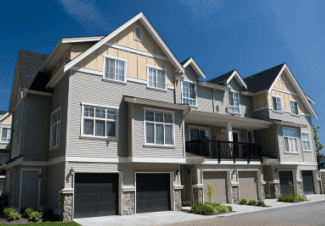Long Recovery for Urban Apartments Challenges REITs

As concessions abate, and multifamily occupancies and rents recover, suburban and Sun Belt markets are clearly outpacing urban. While most suburban markets are enjoying occupancies at or above 2019 peaks, coastal, urban markets remain several hundred basis points below pre-pandemic levels.
Suburban rents are on pace to overtake prior peak levels during 2021, while urban rents remain 5 percent to 15 percent below 2019 peaks, following their declines from pre-COVID-19 levels. As eviction moratoriums expire, physical occupancy rates could be pressured, particularly in some coastal, urban markets. The near-to-medium term supply outlook is more favorable for urban markets vs. suburban, supporting urban recovery.
Longer-term demographic trends, including an aging Millennial wave, should drive demand to less dense, more affordable markets—a trend that favors transit-oriented suburban and Sun Belt markets over selected coastal gateway cities. These persistent headwinds will delay a full recovery of prior peak cash flows for coastal, urban landlords, including selected multifamily REITs.
REITs that over-indexed their portfolios to urban, coastal markets during the last cycle are now increasing Sun Belt and suburban market exposures, primarily through acquisitions. These markets have clear demand tailwinds from population immigration, but limited supply barriers remain.
INCREASED EXPOSURE
Sun Belt supply growth was tempered during the last cycle by tighter bank lending standards in the wake of the global financial crisis. There is no guarantee that this will remain the case during this cycle and that, once again, some REITs will be zigging when they should be zagging.
Strong investor interest in Sun Belt assets has led to cap rate compression, with some market rates competitive with coastal assets. This may result in lower realized returns, especially if spreads revert to a historical spread as urban cities reopen and rents recover.
Still, REITs will generally increase Sun Belt and suburban market exposure, recycling older, more capital-intensive properties for newer assets with better growth prospects. Diversification will reduce portfolio volatility, and economic returns may be improved, but there may be additional upside in urban assets as rents recover.
Development is a medium to longer-term option for REITs to increase Sun Belt exposures. Yields, however, may be pressured by rising construction costs for projects under planning and without fixed-cost contracts. Materials cost inflation may push yields on near-term development starts down by roughly 50 basis points, resulting in returns that are 5 percent to 10 percent below pre-pandemic underwriting. Construction labor costs have heretofore faced less pressure but are a larger component and pose a greater risk to development yields if wage inflation ensues.
Outside of modest retained cash flow, debt remains the cheapest funding source for multifamily REITs, followed by asset sales at low cap rates in the direct property market. The sector is trading at a 10 percent premium to consensus NAVs, which should further support funding external growth within existing financial policies.
While the U.S. is finally seeing some light at the end of the pandemic tunnel, the effects of the last 15 months will be felt well into the future by multifamily REITs. Nimble market repositioning and smart decisions about demographics may mitigate some of the damage. But patience and strategic execution will be critical to weathering the longer-term issues multifamily properties will face as recovery sweeps the nation.
Source: multishousingnews.com















 Accessibility
Accessibility